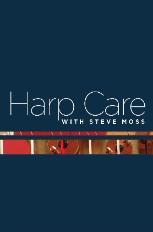Want to receive the Harp Herald, a monthly newsletter with informative articles on harp care, changing strings, moving, and more? Click the big red button to join the mailing list.
Introducing the first and only video on harp care.
Learn more.
If you have already purchased the video and are looking for the free tuning chart, you can download it here.



Thanks for the article on biocarbon strings. I’ve had a Drake for four months and have had three strings break. I’m new to harp playing (9 months) and contacted Lyon and Healy. The rep said if it was five strings in two months they would be concerned. I considered replacing with nylon strings but I like the sound and feel of the biocarbon so I’ll keep replacing them with same. I’m a retired piano teacher.
Penny,
Thanks for your comment. Above average breakage at first has always been fairly common on new harps. As they get acclimated to your home environment and regional climate things tend to stabilize. Changes of seasons often result in more strings breaking as well. BioCarbon strings are supposed to be less vulnerable to these changes but they are quite new and we are still learning how they behave.
I have used the biocarbon strings on several lever harps, but using a lighter gage than would be used on a pedal harp. If tuned twice a day, I find the strings to hold pitch (+/- 5 cents on a tuner) within 5-7 days.
Hi Dave, thanks for the information. Are you having that result when replacing many or all strings on a harp, or more when you replace a single one? The harp I worked on, which was also lever tension, took longer than that to hold, but I was replacing the whole 4th and 5th octaves at once.
I use Sipario BioCarbon on my 3rd & 2nd octave LH Prelude. One hour after I installed them, I unwind and reinstall the string so each tuning pin has three windings. After only 3 days with daily tunings usually they become stable and need only a slight tuning every other day after. I really like the tone and feels of Sipario BioCarbon. They sound warm and ring beautifully, hardly notice different with gut strings.
I’m a casual harp player live in very humid tropical environment (70-85 percent humidity year round ) so I have high expectation Sipario could last longer as the price is almost the same with gut.
One thing I really like is Sipario seem can handle friction better than gut when the lever engaged , just like nylon.
Time will tell however, but I hope the best for Sipario in the future.